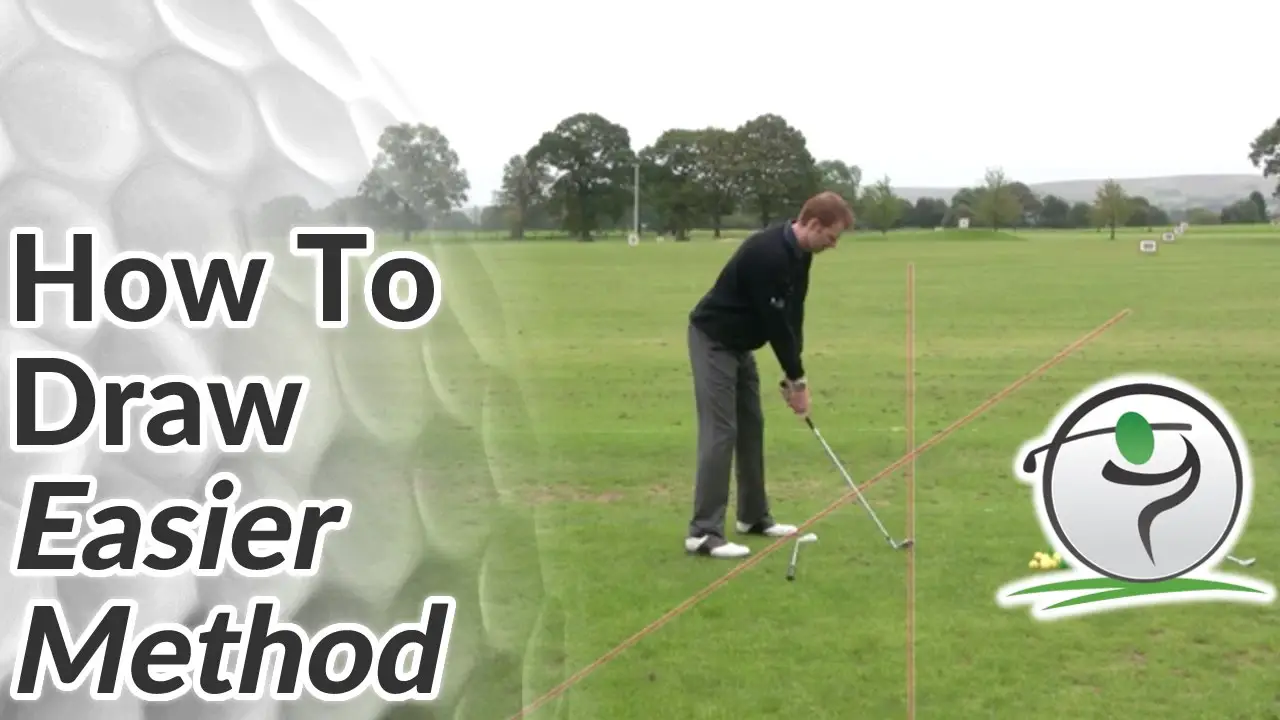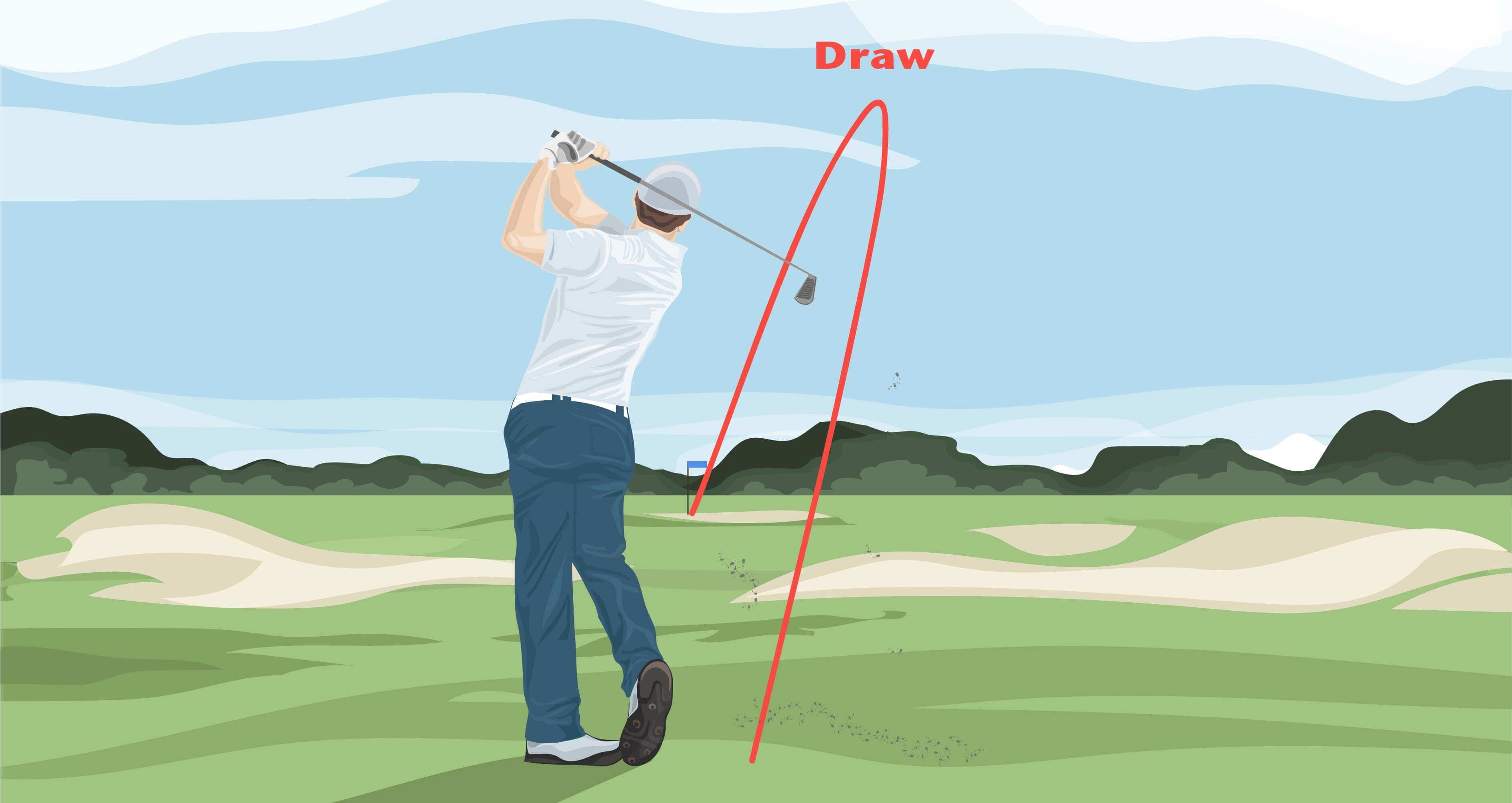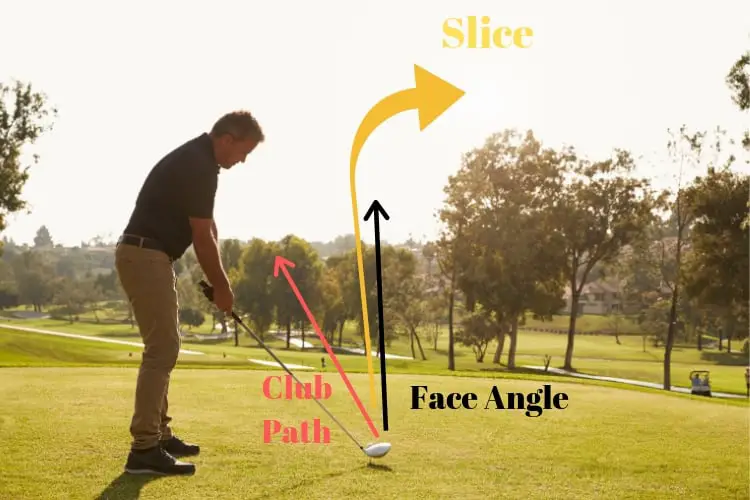Smoothly hitting a perfect draw is one of the ultimate ambitions of a golfer. But the million-dollar question is how to hit a draw in golf? Keep reading the article through the end to know the basics of a draw and how to hit a draw in golf consistently.
You should never forget that hitting a draw is not that easy a task. Sometimes, even experts can't do it. But another thing that one should always keep in mind is that a draw is a golfer's ultimate weapon, so learning it is a must for any aspiring golfer.
Best Training Aids To Improve Technique
Before you learn how to hit a draw in golf, it's important that you know the basics of this golf shot. A draw is a type of shot that straightens out after it travels some distance and moves further right (for a right-handed player).

What is a golf draw, and how to hit a draw in golf?
A draw is a type of shot that moves from right to left for a right-handed golfer. The ball starts out slightly to the right of the target, but curves to the left before getting there. It's good for breaking down tight fairways or avoiding obstacles.
To hit golf drawing easy you need to impart an angled spin on the golf ball. You can do it by holding your clubface open to your swing path throughout your backswing and follow-through.
Why do you need to love a draw shot golf?
A draw is a good way to avoid obstacles on the fairway. If you are just starting out, your natural tendency will be to hit the ball straight. However, this may not always work in your favor if there is an obstacle in front of the golf ball. So it's important that you get used to shooting a draw early on so that when needed, you can easily pull one off without breaking too much sweat.
What are the benefits of learning how to draw a golf ball?
It's easier to hold narrow targets with draw shots. For instance, if there is an obstacle guarding the target line near your aiming point, then draw shot golf would turn out to be useful for you.
Draws are usually longer than fades. So if you are playing a course with narrow fairways, then the draw will come in very handy.
Draws offer more control than fades. They hold their line longer so if you don't have much confidence in hitting long drives, then practicing on draws is a good option for you. Draw golf shot requires less effort and can be hit straight from the tee. Hitting fade requires more effort to make it curve right after traveling some distance and they often go off target, resulting in lost balls or penalties.
A draw in golf is always advantageous as the ball tends to go straight into the target and saves time and effort by avoiding any maneuvering of the ball around the green. Although not as strong as a fade, but still packs quite an impressive punch!
Another interesting fact about this particular shot is that one can make it even if his/her ball does not curve naturally or at all.
The following points explain more on this:
- Pros: One can learn how to hit a draw quickly. It ultimately leads to saving time and effort. Also, it's a great shot when you want to go straight into the green without any maneuvering.
- Cons: A draw is not very powerful and in case the ball curves further right, one may find trouble in hitting shots at an angle around the green.
Types of golf drawing easy
In a draw shot, the ball follows a right-to-left trajectory gently (for right-handers).
Following are the three different types of a draw shot:
- Push Draw: The ball starts on the right of the target but draws left towards it. The ball is hit from right to left. The ball does not curve.
- Straight Draw: The ball starts in a straight line with the target but draws left of it. The ball is hit from right to left and does not curve much.
- Pull Draw: The ball starts on the left and draws more on the left side of the target. The ball is hit from left to right and curves more.
The draw shot is done by hitting the golf ball with a slightly open clubface. And this can be achieved by holding the clubface in this position throughout your backswing and follow through. The swing should come down on an arc, while it needs to remain open throughout till you till the time you strike the ball. Simply put, if you are trying out a pull draw, don't hold it closed while taking your backswing or following through.
Remember that a golfer's technique is the only determinant in the amount of draw of the ball. A draw hitting is always desirable as it allows additional yardage than other shots.
Learning how to hit a draw in golf consistently is of prime importance for a golfer.
How to Hit a Draw in Golf: The Easier Method
A perfect draw shot always has the clubface closed slightly at the impact, i.e., angled towards the front foot. It ensures sidespin, which enables the drawing of a ball from right to left. Some other techniques that experts recommend for perfect draw shots are as follows.
Wedge the ball
While using your wedge for this shot, ensure that you are holding it more open than usual. It basically helps in making an impact with an open clubface i.e., having increased side spin to make the ball constantly draw throughout its trajectory.
Make use of the proper posture
Make sure that you are turning your hips and shoulders smoothly during your backswing, so as to keep momentum on your side throughout the swing till impact is made with the ball. At first, one may find it difficult to hit shots constantly with a perfect draw but after practicing constantly over some time, it will become easier than before.
Use a Different Swing Alignment
Changing swing alignment is one of the most common techniques. It is advisable to keep feet & shoulders at the right of the target while holding the club facing it straight. This allows the clubface to be closed slightly at the stance, enabling a smooth draw.
Besides the stance, the grip on the club should also be repositioned. Rotate the wrist of the top hand towards the target just before the impact. This will allow an immediate impact of the clubface on the ball which eventually enables sidespin.
While hitting a straight draw to the left of your target, hold your clubface open at the impact. It will bring the ball closer to the target line. Remember that it's not always required to hit a shot with perfect sidespin for achieving a good result. The most important thing is to make sure you are perfectly behind every shot rather than focusing on other factors alone.
Tilt Your Body
One of the most common yet effective techniques to hit a draw is tipping your body into the stance. Rotating the upper portion of your body towards the target right before impact will create an equal weight shift and allow you to make a clean strike. This technique works best with irons and woods and not so well with hybrids and putters as they produce less sidespin.
Besides rotating the upper part, you should also consider rotating your lower body towards the target immediately before impact. A little bit of foot movement can provide additional power to this shot, making it more powerful than one would expect from such a simple technique. Keep your feet close together for maximum efficiency while performing this technique.
Maintain a Stronger Grip
Unlike other shots, make sure to have a firm grip on the club while attempting a draw. A firm grip ensures less movement of the club, which results in a closed clubface at impact.
A tight and firm grip is the key to accuracy in the draw shot. Also, experts always recommend choosing a target in line with the golfer's desired draw hit. This way it becomes easier to move your hands in the desired direction while taking your backswing.
The Internet is full of videos that illustrate how to hit a draw shot. You can take some time out and check them out for more information on drawing the ball correctly. No matter what technique you choose, make sure to practice it consistently with enough golf balls before applying it in real-time games.
These methods can help in hitting draws consistently if adopted by amateur golfers. According to recent observations by experts, these are more straightforward methods that can boost one's game by leaps and bounds.
The Draw Shot vs. The Hook
Golfers often get confused between "Draw" and "Hook". Many believe that both these shots originate from the same direction, but this is incorrect! Understanding their differences can help in making better decisions while playing them under different situations:
- Draw: While taking an aim at the flagstick, if you took an open stance, then you will be golf drawing easy. The ball moves from right to left.
- Hook: If you took aim at the flagstick with your stance closed, then you will end up hitting a hook shot. In this case, the ball move from left to right.
Draw golf shot is not as difficult as Hook shots and thus many amateur golfers prefer them over any other type of shot in Golf. There is no doubt that Draw shots have their own problems too but they still remain easier than hooks for most players out there!
It is essential to know why these two types of shots have their own specialties before playing them on the green. We advise all readers to learn more about this topic by out some relevant videos or articles. This will ensure an easier and better understanding of this topic.
The Draw Shot vs. The Fade
As we saw earlier, Hooks and Draws are different types of shots that originate from a different point on the tee. However, there is another shot that shares similarities with these two – "Fade". So what's the difference between all three? Let's see:
- Draw: The ball starts right and ends up on the left side of its target line just like Hook shots, but it does not curve as much as them.
- Fade: When you take aim at your target starting with an open stance, then you are hitting a fade. If you end up closing the clubface during the course of swing then it is a fade. In this case, the ball starts from left and ends up at right side of its target line.
Conclusion: How to Draw a Golf Ball
Make sure that the clubface is subtly facing towards the target in the set-up.
The feet, hips, and shoulders should also be facing the right of the target, but more than the clubface. This helps in a closed position of the clubface at the impact.
Swing the club in line with the feet, hips, and shoulders. The ball will start on the right, but the closed clubface pushes it to follow the left trajectory.
Make sure to hold the club with a tight, firm, and strong grip.

Mike Regan

Mike is a weekend golfer from Connecticut and a devoted fan of the game who turned his passion into the writing experience. Any day he keeps it under 80 is a cool day. When he's not writing about golf his is playing it.










